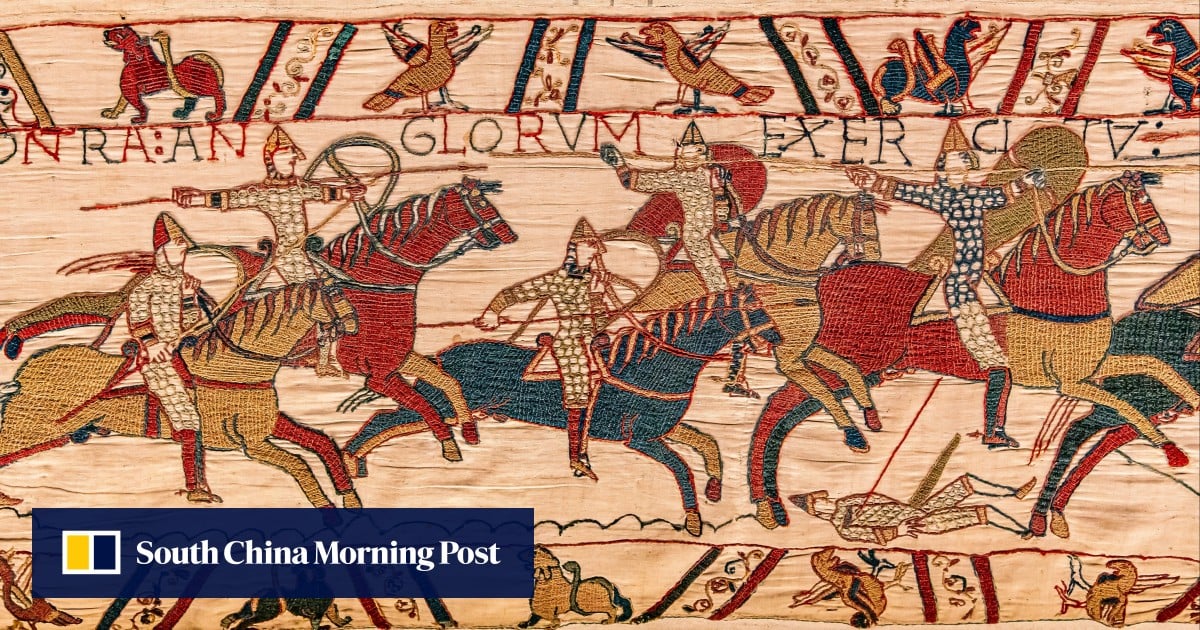For centuries, it has been a source of wonder and fascination. In vivid and gruesome detail, the 70-metre (230-foot) embroidered cloth recounts how the fierce Duke William of Normandy conquered England in 1066, reshaping British and European history.
The Bayeux Tapestry, with its scenes of sword-wielding knights in ferocious combat and King Harold of England’s death, pierced in the eye by an arrow, has since the 11th century served as a sobering parable of military might, vengeance, betrayal and the complexity of Anglo-French relations.
Next year, the fragile artistic and historic treasure will be gingerly transported from its museum in Bayeux, Normandy, to star in an exhibition in London’s British Museum, from September 2026 to July 2027.
Its first UK outing in almost 1,000 years will testify to the warming in relations across the English Channel that cooled with the UK’s acrimonious departure from the European Union in 2020. The loan was announced in July when French President Emmanuel Macron became the first EU head of state to pay a state visit to the UK since Brexit.
Bayeux Museum curator Antoine Verney says the cross-Channel trip will be a homecoming of sorts for the tapestry, because historians widely believe that it was embroidered in England, using woollen threads on linen canvas, and because William’s victory at the Battle of Hastings was a major juncture in English history, seared into the UK’s collective consciousness.
“For the British, the date – the only date – that all of them know is 1066,” Verney says.
